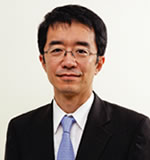Home > About Us > Corporate Social Responsibility > Sustainability Report > Sustainability Report 2008 > Third Party Comment and Editorial Postscript
 Third Party Comment and Editorial Postscript
Third Party Comment and Editorial Postscript
| Comments Upon Reading the Kobe Steel Group's Sustainability Report 2008 |
* The Third-Party Comment does not contain opinions concerning the accuracy of the information included in this report. |
||||||||||||||||||||||||
| Editorial Postscript |
| Secretariat and Publicity Department, Kobe Steel, Ltd. In an effort to help our stakeholders obtain a more intimate view of the Kobe Steel Group's corporate activities, we created a new "Special Feature" in our Sustainability Report 2008, which describes some of the quality assurance efforts we have undertaken in our various business sectors. In the "Materials Balance" section, we included reports on our welding and aluminum and copper operations in addition to our iron and steel operations to provide a more rounded picture of the Group as a whole. Also, continuing our policy from the previous year, we present a progress report on the countermeasures we have adopted to ameliorate the emissions problems that arose at our Kakogawa Works and Kobe Works in May 2006, while outlining our efforts to prevent recurrence. We hope that readers will share their opinions with us so that we can make further improvements in next year's edition. |
|
Secretariat and Publicity Department, Kobe Steel, Ltd. |



